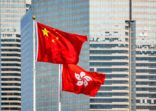For the full year 2019, $1.7bn were redeemed from China A-share ETFs listed in Hong Kong, while there were $500m in net outflows from China equity (offshore) ETFs, according to a Morningstar report.
However, there are signs that investors in the SAR are slowly going back into the asset class, with the largest China A-share ETFs seeing net inflows in January.
According to the report, the iShares FTSE A50 China Index ETF, the China AMC CSI 300 Index ETF and the CSOP FTSE China A50 ETF collectively had net inflows of $100m in January.
Newly launched China-focused ETFs also gained some traction from investors. For example, Mirae Asset’s three thematic ETFs that were launched in mid-January collectively attracted HK$123m ($15m) in assets, with the Global X China Electric Vehicle having the most net inflows (HK$60.6m), according to data from Morningstar Direct.
China ETFs listed in the US also had net inflows, according to the report. For example, the iShares China Large-Cap ETF and the iShares MSCI China ETF collectively had $200m of net inflows. Meanwhile, the Xtrackers Harvest CSI 300 China A ETF had $500m in net new money.
However, not all products had net inflows.
For example, the largest offshore China equity ETF listed in Hong Kong, the Hang Seng China Enterprises ETF, saw net outflows of $400 in January, according to the report.
While the latest data show a turnaround in sentiment toward China equities, Jackie Choy, Hong Kong-based director for ETF research for Asia at Morningstar, noted that it is too early to form a simple conclusion. He also added that the monthly capital flow data for all ETFs in the SAR is not yet complete.
Since the start of the year, investor sentiment toward China has been impacted by the signing of the phase one trade agreement with the US, the coronavirus epidemic and the pledge by the government to deliver strong fiscal stimulus.
“It was a pretty heavy month for China in terms of news flow,” Choy said.

















